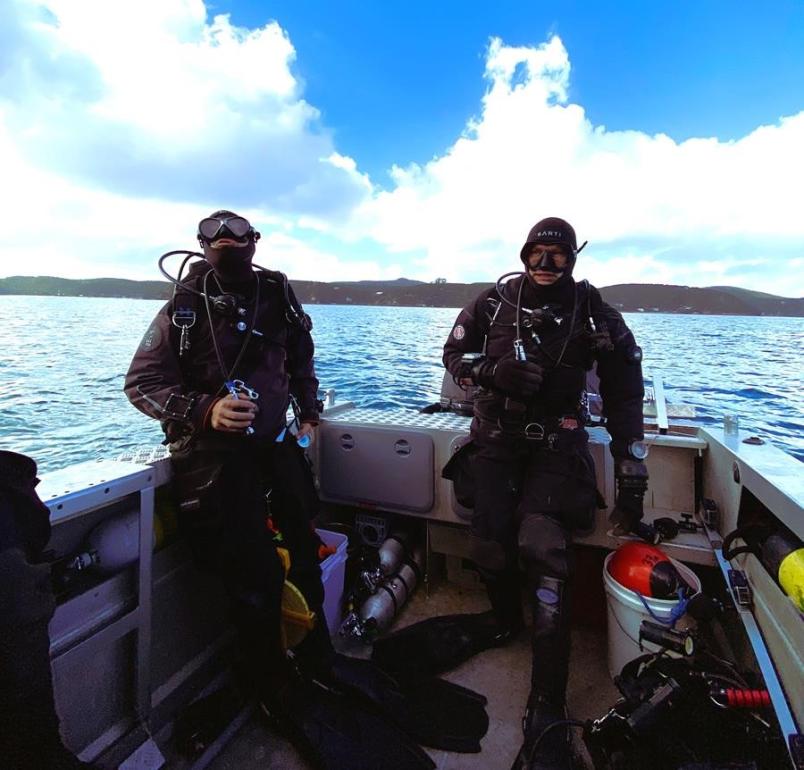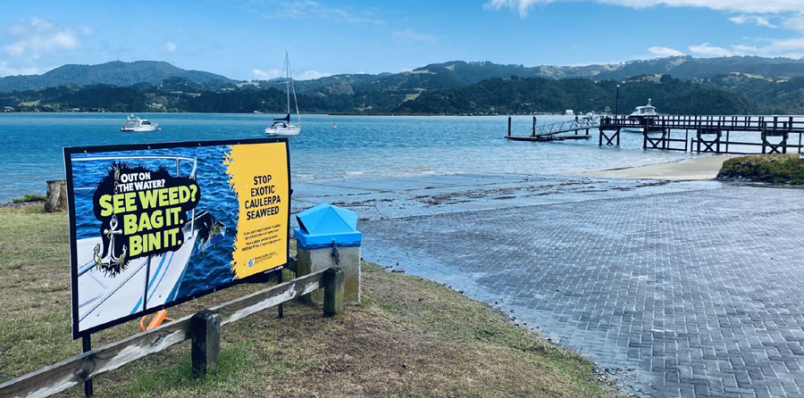Authorities are ramping up efforts to combat the spread of exotic caulerpa after the invasive seaweed was found at two new locations in the Hauraki Gulf.
In an update last week, Biosecurity New Zealand confirmed the discovery of exotic caulerpa at the Mokohinau Islands and Rakino Island.
The Mokohinau Islands are administered by the Department of Conservation and are uninhabited but a popular destination for boating, fishing and diving. Exotic caulerpa was found at a depth of approximately 23m in the Edith Passage, just east of Motupapa and Hokoromea Islands.
Rakino Island, near Motutapu and Waiheke Islands, has a small number of residents and is also a marine recreational area. Approximately one square metre of exotic caulerpa was detected in Woody Bay at a depth of about seven metres.
The marine pest has been found in five other upper North Island locations - Aotea Great Barrier Island, Ahuahu Great Mercury Island, Waiheke Island, Kawau Island and Te Rāwhiti Inlet in Northland. It spreads rapidly, forming large underwater fields that can compete with other species for space and upset the balance of local ecosystems - presenting a risk to recreational, cultural, and commercial marine activities.
"These new detections are disappointing but not unexpected, given the ability for exotic caulerpa to be moved over long distances on vessels and marine equipment," Biosecurity New Zealand said in its update.
"We’re working with partners and those people most closely associated with the new affected areas to determine the most appropriate response to this discovery."
Meanwhile, a new trial to remove caulerpa in an intertidal zone has started in Northland while testing continues managing the perimeters of identified priority areas of the invasive seaweed in the Auckland region.
"Collaborative work between Biosecurity New Zealand, regional councils, and mana whenua is well underway, testing technology to find and contain caulerpa and then remove it, where possible, from some affected areas," the statement read.
NIWA divers last week entered the water at Iris Shoal near Kawau Island to survey the caulerpa patches there and collect information to inform suction dredging, which was expected to start soon.

NIWA divers prepare to enter the water at Iris Shoal. Photo / Ihipera O'Kane, Te Au ō Moana
"While the caulerpa at Iris Shoal is in a small and sparsely spread area, it is in a difficult marine environment with changing depths, tides and currents. The work is expected to continue until approximately 11 May."
In Northland, where large-scale suction dredge technology is being trialled, the current focus is installing equipment to separate sand from material sucked from the seabed.
"The barge that carries the mechanical suction dredge is currently in Opua for the attachment of two trommels (sand separators) which will allow sand to be separated from the dredged exotic caulerpa so the process is faster and more efficient," Biosecurity NZ SAID.
"We are optimistic that the equipment will be ready for operational use shortly."
In February, the Government announced a $5 million funding boost to escalate efforts to contain exotic caulerpa.
As part of this, Northland Regional Council (NRC) has begun an intertidal trial to test and find the best treatment (salt, bleach, chlorine granules, dishwashing liquid, or matting) to remove exotic caulerpa in an intertidal zone.
This is an add-on to the suction dredge trial as the large suction head cannot be used over shallow, rocky areas.

Two large trommels are mounted on the suction-dredging barge at Opua. Photo / Northland Regional Council
At Aotea Great Barrier Island, a project led by Auckland Council is testing how to manage the perimeters of identified priority areas of exotic caulerpa.
"What we learn from this trial will inform how we can best slow the spread of ‘creeping’ expansion in areas of infestation.
"The work is planned to begin in early May, focused on the Man o’ War Passage (Port Fitzroy), Motuhaku Island (Port Abercrombie) and Katherine Bay."
To enhance public awareness, staff are working with the Department of Conservation to get signs installed at several smaller Auckland islands - Rangitoto, Motutapu, Motuihe, Tiritiri Matangi, Motuora and Kawau.
Exotic caulerpa was first found in New Zealand in July 2021 at Aotea Great Barrier Island. It is not known where or when it first entered New Zealand waters but it is believed to have arrived on a vessel travelling from Australia or the Pacific. The amount found in the various locations suggests it has been here for several years.

Signage at Omaha in Auckland.
How you can help
Boaties, fishers and divers have a role to play in slowing the spread of exotic caulerpa to new locations.
The current advertising campaign encourages water users to check their anchor, anchor chain and other equipment before moving location. Make sure there’s no seaweed attached, but if there is, remove it, securely bag it and dispose of it in a rubbish bin back at shore.
There are also rules in place at affected locations. These rules effectively ban anchoring and some fishing activities and are there because caulerpa can be spread over long distances as small pieces caught up on fragments attached to anchors, anchor chains and fishing/diving gear.
A rāhui is also in place on some boating and fishing activities in locations where exotic caulerpa has been found.
If you think you’ve seen exotic caulerpa, report it to Biosecurity New Zealand on 0800 80 99 66 or online at report.mpi.govt.nz
Full Information on caulerpa, the rules and reporting can be found here.




